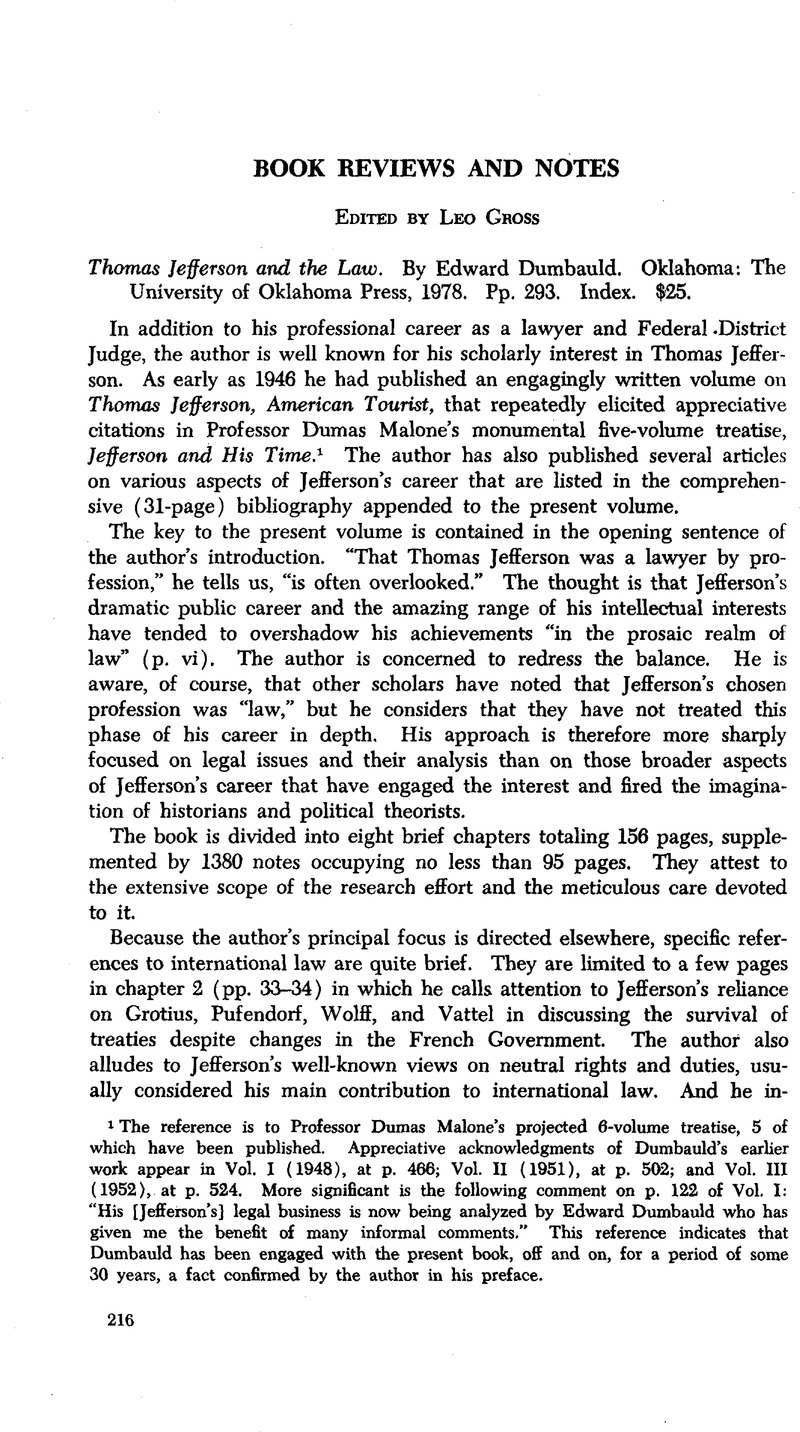No CrossRef data available.
Article contents
Thomas Jefferson and the Law. By Edward Dumbauld. Oklahoma: The University of Oklahoma Press, 1978. Pp. 293. Index. $25.
Published online by Cambridge University Press: 27 February 2017
Abstract

- Type
- Book Reviews and Notes
- Information
- Copyright
- Copyright © American Society of International Law 1980
References
1 The reference is to Professor Dumas Malone’s projected 6–volume treatise, 5 of which have been published. Appreciative acknowledgments of Dumbauld’s earlier work appear in Vol. I (1948), at p. 466; Vol. II (1951), at p. 502; and Vol. Ill (1952), at p. 524. More significant is the following comment on p. 122 of Vol. I: “His [Jefferson’s] legal business is now being analyzed by Edward Dumbauld who has given me the benefit of many informal comments.” This reference indicates that Dumbauld has been engaged with the present book, off and on, for a period of some 30 years, a fact confirmed by the author in his preface.
2 The author’s seeming neglect of international law is not attributable to an oversight but to a self-imposed limit on the scope of his book. His bibliography lists a number of articles dealing with this aspect of Jefferson’s career including Waltze, Thomas Jefferson and the Law of Nations, 29 AJIL 66–81 (1935), and Sears, Jefferson and the Law of Nations, 13 Ameh. Pol. Sci. Rev. 379–99 (1919). See also Dumbauld, Independence under International Law, 70 AJIL 425–31 (1976).
3 The case involved a dispute over the deposit of alluvial lands in the “batture” (beach) of New Orleans. During his term as President, Jefferson ordered the forcible ejection of Livingston from the land. Dumbauld devotes 38 pages to an analysis of the background of this case and the specific legal issues it generated. The case was dismissed on procedural grounds on December 5, 1813.




